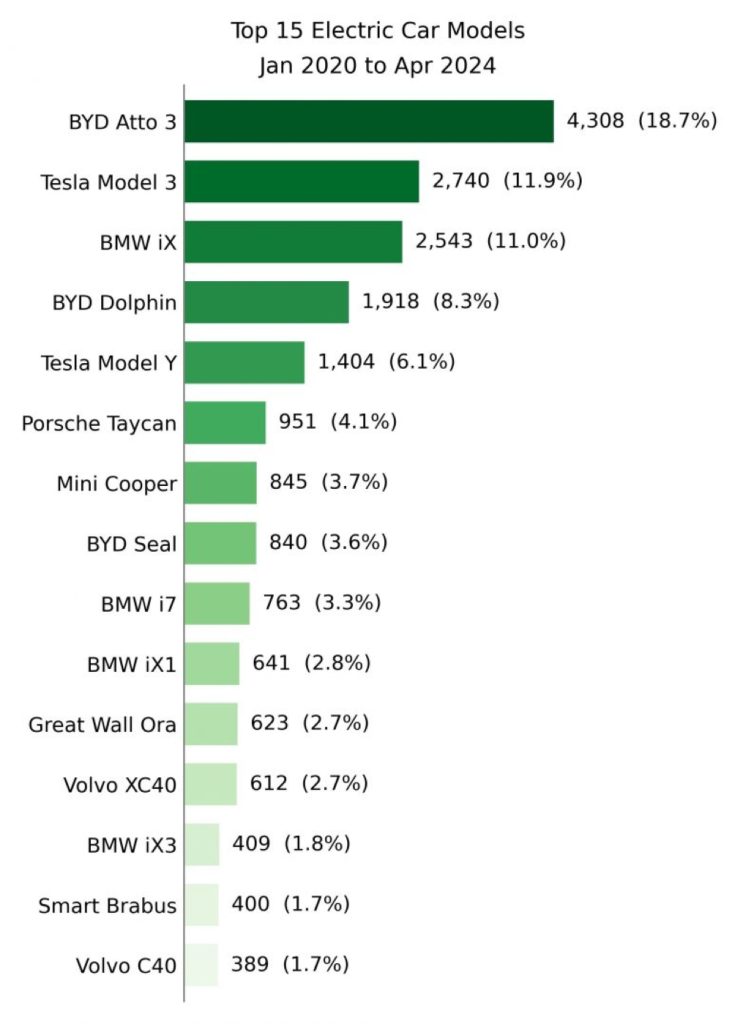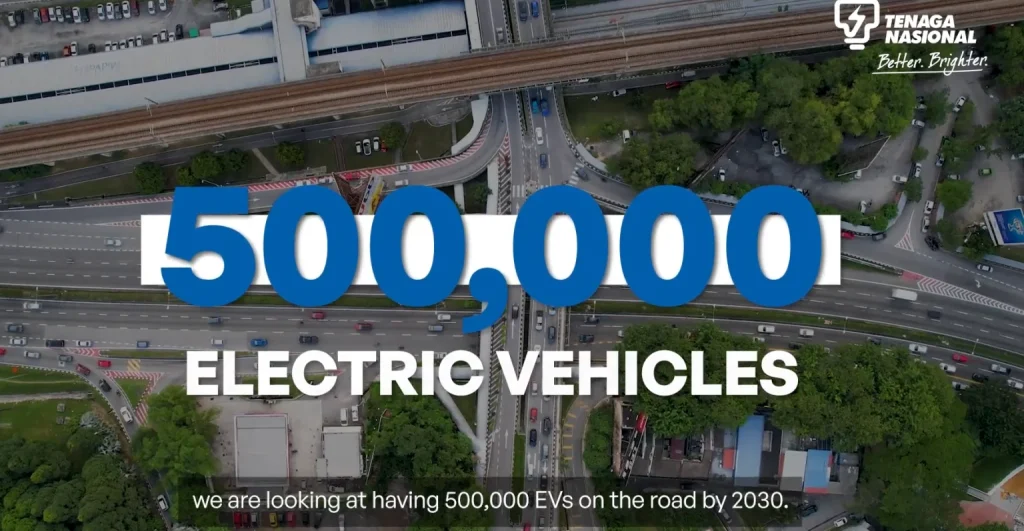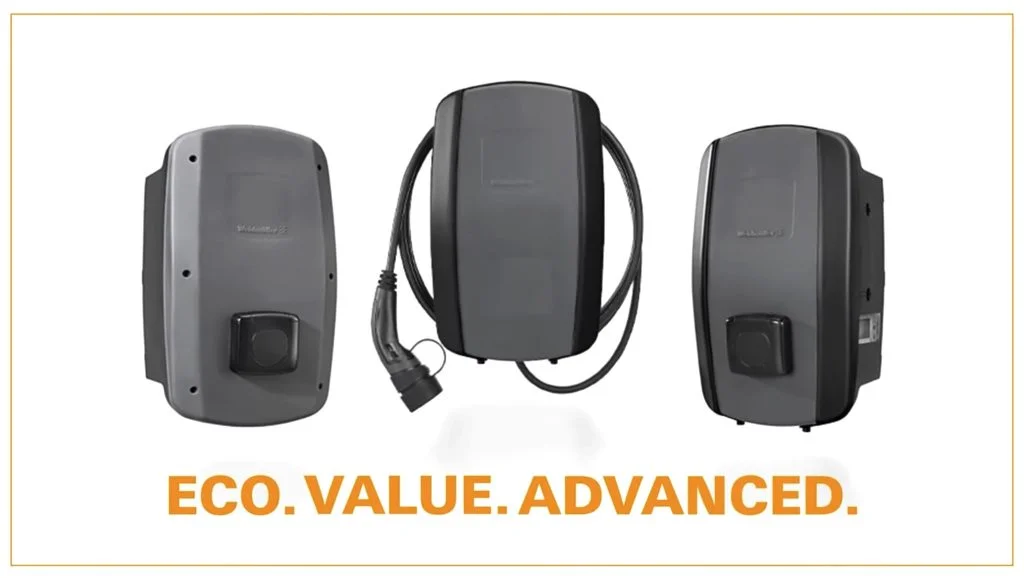


With the world rapidly embracing electric vehicles (EVs) as a solution to climate change and the transition to cleaner transportation, focusing on efficient and accessible EV chargers has become paramount. While electric cars often grab the headlines, the EV chargers enable this transformative shift, ensuring the practicality and convenience of EVs for everyday use. As the EV market grows, the demand for innovative EV charging solutions that cater to various needs—from residential setups to public fast-charging networks—is at an all-time high. This article will explore the evolving landscape of EV chargers and their crucial role in powering the future of electric transportation.

According to official JPJ statistics, Malaysia recorded 10,664 Electric Vehicle (EV) sales in the first half of 2024, more than double the 4,410 units sold during the same period last year. This marks a 148% year-on-year increase. EV sales made up 2.6% of total vehicle sales in the first half of 2024, out of 410,819 vehicles sold, compared to 1.1% in the first half of 2023. This continued the steady growth in EV sales over the past few years.

IR Mohd Junaizee Mohd Noor, Project Director at TNB, recently addressed key questions about electric vehicles (EVs) and their impact on Malaysia’s environment and EV adoption.
One question that stood out was whether EVs truly contribute to lowering the carbon footprint. Mr. Junaizee affirmed that electric vehicles will make a significant difference in the environment. According to a study conducted by TNB Research, EVs emit 23% less carbon than conventional internal combustion engine vehicles. Furthermore, with TNB's commitment to reducing carbon emissions from power stations by 50% by 2035, the overall carbon emissions associated with EVs are projected to decrease by up to 30%.
Looking ahead, Malaysia anticipates having 500,000 EVs on the road by 2030. Achieving this milestone could substantially reduce CO2 emissions, estimated at around 4.4 million tonnes. This reduction highlights the potential for EVs to play a pivotal role in Malaysia’s efforts to combat climate change.

IR. Mohd Noor identified three key challenges facing Malaysia's transition to electric vehicles (EVs):
In summary, while Malaysia faces several challenges on the road to a fully electric future, the potential environmental benefits of EVs are substantial. With ongoing efforts to reduce carbon emissions and enhance EV infrastructure, the shift towards electric vehicles represents a promising step towards a greener and more sustainable future.
Despite the rapid growth in Electric Vehicle (EV) sales in Malaysia, the EV charging industry faces several significant challenges. These obstacles must be addressed to ensure a seamless transition to electric mobility and maximize the benefits of EV adoption. From high installation costs to the need for standardization, each challenge impacts the industry's ability to support widespread EV use effectively.
Installing a comprehensive charging station network is expensive, particularly for DC fast chargers. Governments and private companies must invest significantly to make these stations accessible to the public.
With increasing numbers of EVs on the road, the demand on the electricity grid will rise. Ensuring that grids are robust enough to handle this demand, especially during peak hours, is critical.
Various charging standards across regions and manufacturers—such as CCS, CHAdeMO, and Type 2—create significant confusion and compatibility issues for EV drivers. This lack of uniformity can lead to difficulty finding suitable charging stations and ensure that drivers may face limitations depending on their vehicle's charging system. As the electric vehicle market grows, achieving standardization in charging protocols will be essential for simplifying the charging process, enhancing user experience, and ensuring seamless integration across different EV models and charging networks.
Even though EV ranges are increasing, many drivers fear running out of power during long journeys. Expanding the fast-charging network and increasing charging speeds are necessary to mitigate this concern.
Many EV owners remain concerned about the reliability and availability of charging stations. Issues like out-of-service chargers, high usage rates, and insufficient station numbers contribute to user frustration.
The adoption of residential EV chargers in East Malaysia faces significant challenges, particularly in older homes equipped with single-phase power supplies. These power systems are designed for typical household loads like lighting and heating but are inadequate for powering high-demand devices such as EV chargers. As a result, charging electric vehicles at home can take much longer and be less reliable. In contrast, commercial and industrial facilities typically benefit from three-phase power, which can more efficiently accommodate higher loads and fast-charging equipment.
Homeowners in East Malaysia can request an upgrade to a three-phase power supply from Sarawak Energy. Still, this process is often costly and requires substantial upgrades to the local grid infrastructure. These infrastructure limitations present significant barriers to the widespread adoption of EV chargers, slowing the region's transition to electric mobility. Government initiatives and incentive programs are needed to encourage and facilitate affordable, accessible residential EV charging solutions throughout East Malaysia.
An EV charger is essential for electric vehicles (EVs) and plug-in hybrid electric vehicles (PHEVs) to keep their batteries charged. Like any rechargeable device, an EV charger supplies the necessary power to maintain battery life. The development of EV chargers is crucial to the electric vehicle industry, supporting the growth and adoption of EVs. With a reliable EV charging infrastructure, drivers can power their vehicles and travel long distances without using fossil fuels. Charging stations are vital to this infrastructure, enabling users to charge their vehicles at home, work, or public charging points.

The charging process for electric vehicles (EVs) involves steps that ensure efficient power transfer from the charging station to the vehicle’s battery. Here's how it works:
The first step is connecting the EV to the charging station. The charging cable is plugged into the vehicle’s charging port, which varies based on the type of EV and the station being used.
Before the charging begins, the vehicle and the charging station communicate to verify compatibility. This step ensures that the vehicle can safely receive the power. Additionally, some stations require user authentication, such as scanning a card or using an app, to authorize the charging session.
Once authorized, the station starts delivering electricity. For most home or public chargers, alternating current (AC) from the power grid is converted to direct current (DC) by the vehicle's onboard charger. In fast-charging stations, the conversion happens at the station, delivering DC power directly to the battery for faster charging.
Throughout the charging process, systems monitor the flow of electricity, ensuring that the vehicle’s battery is charged efficiently and safely. Advanced safety features, such as ground fault protection and temperature monitoring, prevent overcharging or overheating, which can damage the battery.
Once the battery reaches full capacity, or if the user manually stops the session, the charging process automatically ends. Some chargers notify the user via a mobile app or an on-screen message when the charging is complete, ensuring the vehicle is ready for use.
As Malaysia advances its commitment to sustainable transportation, expanding EV charging infrastructure is crucial. Enhancing the network of EV chargers offers numerous benefits across various sectors, supporting EV market growth and contributing to economic and environmental goals. EV chargers transform transportation, energy consumption, and urban development.
EVs significantly reduce emissions compared to traditional internal combustion engine vehicles. Chargers enable the transition to cleaner transportation by ensuring drivers can easily charge their vehicles.
For drivers, charging an EV at home using AC chargers can be considerably cheaper than filling a tank with gasoline. Furthermore, with the growth of renewable energy sources like solar and wind, EV charging can become even more cost-effective.
As countries invest in EV charging infrastructure, new jobs are created in the installation, maintenance, and operation of these stations. Additionally, businesses can attract more customers by offering EV charging facilities in their parking lots.
The ability to charge vehicles at home or work means that drivers are no longer dependent on gas stations, providing greater flexibility and convenience.

One of the most important factors to understand about EV chargers is the distinction between AC (Alternating Current) and DC (Direct Current) charging.
AC charging is the most common type for home and public charging stations. This is because the grid provides power as AC, and every electric vehicle has an onboard charger that converts AC power into the DC power needed to charge the battery. AC chargers typically have lower power outputs, ranging from 3.7 kW to 22 kW. They are ideal for residential and slow charging, where vehicles can be plugged in overnight to reach full charge.
The benefit of AC charging is its affordability and availability. Most public charging stations and home chargers are AC-based, making it easy to find charging points. The downside is the longer charging time compared to DC fast chargers, particularly for larger EV batteries.
DC fast chargers bypass the vehicle’s onboard charger, supplying power directly to the battery. This allows for significantly faster charging speeds, typically ranging from 50 kW to 350 kW. DC charging stations are found at dedicated fast-charging locations such as highway service areas and major hubs, where drivers must charge quickly and continue their journey.
While DC chargers offer the advantage of speed, they are considerably more expensive to install and maintain. These chargers are better suited for commercial use and locations requiring high turnover, such as urban centers or along major transportation routes.
Although electric vehicles are an eco-friendly alternative that reduces reliance on gasoline, a Level 1 home charger often proves to be neither reliable nor convenient for most Electric Vehicle owners. In contrast, upgrading to a faster Level 2 charging station significantly eases range anxiety and addresses logistical concerns by making drivers less dependent on public charging options. Understanding the advantages of a Level 2 charger over its Level 1 counterpart reveals why it offers greater value and efficiency for daily Electric Vehicle use.

A Level 2 EV charger offers a significant speed advantage over a Level 1 charger. While a Level 1 charger typically provides about 4 miles of driving range per hour, a Level 2 charger delivers an average of 32 miles per hour, up to 8 times faster. Charging a vehicle with a Level 2 station usually takes 4 to 8 hours, from empty to full, compared to the 11 to 20 hours required by a Level 1 EV charger, regarding power output, Level 2 chargers supply between 6.2 and 19.2 kW, far surpassing the 1.2 kW output of Level 1 chargers.
Weidmüller AC SMART EV Chargers are Level 2 EV chargers, providing faster and more efficient charging compared to standard Level 1 options. Additionally, explore a more intelligent way to charge electric vehicles with the AC SMART Mobile App, designed to help users easily tackle electromobility challenges. The AC SMART VALUE and AC SMART ADVANCED charging solutions offer seamless PV surplus charging through direct inverter communication or bidirectional meter integration. The app’s intuitive interface allows users to select their preferred power source, optimizing charging efficiency and lowering costs.
The Weidmüller AC SMART EV Chargers excel in both ease and speed of installation, meeting the needs of installers and users. Developed with input from operators and installation experts, the chargers are designed to simplify the installation and maintenance process. Features such as streamlined station access and reduced error potential make the AC SMART family exceptionally reliable and durable throughout its life cycle.
Praised for its design and performance, the AC SMART charging boxes earned the German Design Award Special 2023, highlighting Weidmüller’s commitment to providing innovative, top-quality charging solutions. The AC SMART EV Chargers are where efficiency, reliability, and sustainability converge for a superior electric vehicle charging experience..
The Weidmüller AC SMART ECO is an ideal Level 2 EV Charger for residential use, featuring a user-friendly design that makes it perfect for home installations. It delivers charging power ranging from 7.4 to 22 kW, accommodating various EV models. Compatible with both 1-phase 230 V / 32 A and 3-phase 400 V / 16 A or 32 A power sources, it ensures efficient and reliable charging. The ECO model provides flexibility with a Type 2 socket or a 5-meter Type 2 charging cable. Users can monitor and manage the charging process through a dedicated app and web server for enhanced convenience.

The AC SMART VALUE prioritizes safety and efficiency, making it ideal for commercial and multi-unit residential setups. It features switch functionality for connecting multiple units, with integrated static load management to prevent electrical overload. Offering 11 to 22 kW of charging power and supporting 3-phase 400 V sources, the VALUE model ensures resource distribution among EV stations. Additionally, both VALUE and SMART EV Chargers can be configured to support PV (photovoltaic) charging using the AC SMART mobile app, allowing it to utilize solar energy for more sustainable charging options. Security is enhanced by RFID authentication, and the system communicates seamlessly with existing automation networks using the OCPP 1.6 protocol.

The AC SMART ADVANCED is designed for high-demand commercial environments, integrating dynamic load management to optimize energy usage and reduce costs. With a charging capacity of 11 to 22 kW and compatibility with 3-phase 400 V sources, it supports fast, reliable EV charging. It also enables PV (photovoltaic) charging, allowing the system to harness solar energy for a more sustainable and eco-friendly operation. Access is secured via RFID/NFC, mobile app, or powerline communication. MID-compliant data recording ensures accurate tracking, and OCPP 1.6 integration allows for smooth communication with backend systems for efficient infrastructure management.



Ultech Engineering strategically targets individual homes and commercial sectors with Weidmüller AC SMART ECO EV Chargers. For residential customers, the full package—priced at RM 3988—includes the Weidmüller AC SMART ECO EV Charger, a DB Box with RCCB & MCB, and an Isolation Switch. Designed for ease of installation and operation, the ECO line is ideal for homeowners and developers.
Ultech Engineering offers referral incentives of up to RM 1600 to expand its market reach to contractors and EV dealers for each installation. Partnering with dealerships, it bundles the chargers with new car purchases. Social media campaigns further amplify this strategy, targeting the right consumer demographic.
However, East Malaysia faces unique challenges with outdated single-phase power supplies, making EV charger installation more difficult and costly. While upgrading to three-phase power is possible, it requires significant infrastructure investment, posing a barrier to the widespread adoption of EV chargers in the region.





